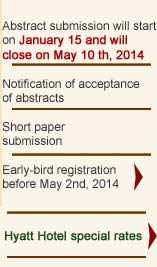
|
Merida
of the most important archaeological sites in Mexico. It is a great center of activities and is very well connected by road and air to other places in the region and the country. It offers all the amenities of a big city, together with the rich history and culture of colonial Mexico. It is a cosmopolitan and picturesque city, with a strong Mayan influence; it serves as a starting point to visit the archaeological sites of Chichen Itza and Uxmal, as well as other less known but equally important sites.
How easy is it to settle down?
It recently began to be seen as a new oasis within the options for foreign expatriates and retirees. Merida is one of the richest provincial cities in Mexico, and is an excellent option for settling down to live, due to its excellent infrastructure, amenities and major air connections to the United States and Mexico City.
Currently, there are about 300 residences inhabited by foreigners in the city center only, however, the sale of homes in the Historic Center of Merida, Yucatan, has increased due to the high demand these properties have among American and Canadian citizens. Properties in the Historic Center of Merida are sold for over USD $30,000 and their value may increase by eight or ten times, even more if they are restored homes.
Purchasing life insurance in Mexico is less expensive when compared to the United States, and it also depends on the levels of health care services, coverage and deductibles. If you are a foreigner, you will need a resident visa (FM2 or FM3) to be able to contract a private health insurance policy and receive treatment in Mexico. In every major city in the country you can find physicians with the same level of training as in the United States or Canada, and it is rare to find a physician in Merida who does not speak some English. It is preferable to obtain a personal referral from another physician.
Dr. Arturo is a bilingual specialist with an impressive experience. Over the course of a 30 minute visit, he examined me leisurely, evaluated my situation and assured me that the injury was just a sprain. His treatment plan was simple and effective. The cost for his services was almost the same I pay at Kaiser, California. - Jim Neeley, Merida, Mexico, yucatanexpatriateservices.com
What recreational activities are offered?
In recent years, Merida has seen its streets explode with art and culture. Something is always happening in Merida, such as concerts, festivities, parades and celebrations, which are a common sight in this vibrant city. You can also join groups engaged in rescuing dogs and cats, and help to make Merida a more attractive destination. Foreign expatriates also meet in reading workshops, such as the Merida English Language Library; as well as in art workshops, travel groups, wine tasting groups, biking groups, dancing and language classes. There is no better way to learn Spanish than enrolling in a language school, and there are a large number of these institutions in Merida.
Things to do
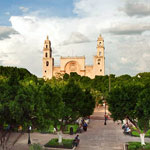 |
Merida's Historic Heart
The lovely tree-lined central plaza in Merida is the architectural and cultural centerpiece of the city. Merida's centro historico (historic center) is one of the largest in Mexico and laid out on a grid pattern. Many of the buildings here, including those on and around the Plaza Grande (central plaza), were built during the colonial period through the 18th and 19th centuries. The Cathedral de San Ildefonso (San Ildefonso Cathedral) is the oldest cathedral on the continent and one of the top Merida attractions. It was built between 1561 and 1598 using stones from ruined Mayan pyramids and temples.
|
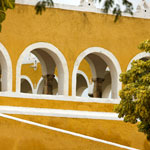 |
Izamal: The Magical Yellow City
Izamal dazzles visitors with brightly painted streets, fascinating history and colorful folk art. After departing Mérida, travel east to arrive at Izamal, a colonial charmer with a distinct small town feel. Izamal is one of Mexico's Pueblos Magicos (Magic Towns), a designation given by the Mexican secretary of Tourism to towns that have an important historical or cultural significance. Houses, shops and churches throughout Izamal are all painted the same shade of golden-yellow and the town has been nicknamed La Ciudad Armarillo (The Yellow City). Izamal was an important Maya religious center and today you can visit the ruins of four large pyramids that overlook the center of town. Climb to the top of the Kinich Kak Mo Pyramid.
|
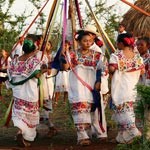 |
Spirited Fiestas in Yucatan
omba! Experience a traditional Yucatecan celebration of folk music and dance in Merida. Vaquerias are traditional feasts and celebrations of music and dance unique to Yucatan. The traditional Vaqueria Feast is influenced by the traditions of the both the indigenous Maya and the Spanish and is usually held in honor of the patron saint of a village or hacienda (plantation). The fiesta typically lasts for several days and includes traditional food, music, dancing and fireworks. Vaquerias were magnificent displays of wealth during the sisal boom of the late 19th and early 20th centuries. Today, they continue to be important celebrations for the people living in Yucatan.
|
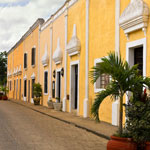 |
Valladolid, The Sultan of the East
Colonial Valladolid, in the heart of Yucatan, boasts fascinating churches, sinkholes and distinct local dishes. Located mid-way between Mérida and Cancún, colonial Valladolid is the third-largest city in Yucatán and a good base from which to explore the surrounding region. Visit Mayan ruins at Chichen Itza and Ek' Balam, the Balankanche caves and Rio Lagartos, a coastal fishing village and flamingo colony located within the Reserva de la Biosfera Rio Lagartos (Lagartos Biosphere Reserve). Valladolid is built over the ancient Maya ceremonial center of Zaci. The city centers on the Parque Francisco Canton Rosado (Francisco Canton Park) where you'll find the Iglesia de San Servacio (San Servacio Church).
|
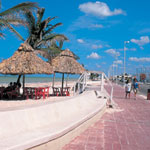 |
Yucatan Sun and Beach
Escape to the beach in sunny Progreso, a favorite weekend and holiday destination known for its seafood. Mérida residents flock to the port city of Progreso to stroll along the malecón (waterfront promenade) and take a dip in the emerald green waters of the Gulf of Mexico. Progreso's lovely waterfront promenade is always bustling with food and craft vendors, local residents and beach-goers. The waters just off the coast are calm, clean and good for swimming. Progreso is also a popular cruise ship destination and the city is famous for its pier that extends an impressive 6 km (4 miles) into the Gulf of Mexico.
|
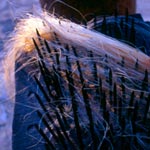 |
Yucatan Green Gold
Visit cultural treasures reminiscent of Yucatán's prosperous past. The haciendas henequeneras in Yucatán first emerged in the 17th century as family-owned cattle ranches, farming and manufacturing centers that produced products for export, before later converting to henequen production. Henequen, a type of agave plant that grows extensively in the Yucatán region, was first discovered and cultivated by the indigenous Maya in the eastern region of the Yucatán Peninsula. The leaves of the henequen plant are used to make a fiber that can be used to make rope or twine. When the Spanish arrived they renamed the fiber “agave sisal,” mechanized the production process and began exporting agave sisal to other parts of the world. |
 |
Seeing Pink in Celestun
Venture into a wild coastal region of Yucatán where pink flamingos outnumber residents. Celestun, meaning "painted stone" in Yucatec Maya, is a tranquil fishing village located west of Mérida along the coast of Yucatan state. Celestun is home to secluded stretches of beautiful beachfront and palapas serving up some of the best seafood in the state. It's the ideal destination for those looking to escape the city crowds and get back to nature. The main attraction in Celestun is the Reserva de la Biosfera Ría Celestun, a large coastal wetland reserve and wildlife refuge. Situated near the border with Campeche and spanning an impressive 146,000 acres, the Celestun Biosphere Reserve is one of the most beautiful natural areas in Yucatan.
|
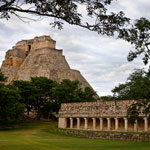 |
Uxmal's Jungle Ruins
The ceremonial complex is one of the masterpieces of the ancient Mayan civilization. A majestic layout, spectacular jungle setting and pink-hued limestone pyramids and temples make Uxmal one of the most picturesque ancient cities in the Puuc region. The name Puuc translates to hills in Yucatec Maya, as the Uxmal ruins are situated on hilly terrain. A UNESCO World Heritage Site, Uxmal was one of the most important Maya settlements in Yucatán that flourished during the late-Classical period. The name Uxmal means "thrice-built" in Yucatec Maya. |
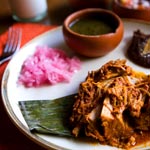 |
Yummy Yucatecan Delicacies
Fragrant and tangy, Yucatecan cuisine delights the palate with flavors unique to the region. The distinct regional cuisine of Yucatán state incorporates many of the ingredients traditionally used in Mayan cooking, including corn, chocolate, wild turkey, squash, chiles and tomatoes, plus European ingredients, such as pork and oranges from the Spanish and Edam cheese from the Dutch. Yucatecan cuisine differs from traditional Mexican cuisine in part due to the Yucatán region's geographic isolation from other regions of Mexico, as well as its European, Caribbean, Middle Eastern and indigenous influences. Many of the delectable dishes that you'll find on the menus at restaurants in Mérida, are not traditionally prepared in other parts of the country.
|
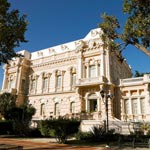 |
Paseo de Montejo, Colonial Splendor in Merida
Merida's elegant tree-lined Paseo de Montejo is the city's main boulevard and most fashionable district. Once a primarily residential area, the Paseo de Montejo has since been commercialized. Many of the historic 19th century mansions that line the boulevard have been converted into restaurants, nightclubs, boutique hotels, shops, office buildings and museums. Located northeast of the central plaza and architecturally reminiscent of Havana, Cuba, the area surrounding the Paseo de Montejo was developed during the henequen industry boom of the late 19th and early 20th century.
|
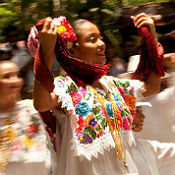 |
Carnival in Merida: Mambo, Salsa and Cumbia
Having a long tradition, the Merida carnival takes place within a family environment. Over the course of eight days, several cultural and entertainment activities take place, such as the coronation of the king and queen and the burning of the bad mood. The latter event is held in the city’s main square; it begins by reading aloud the conviction of the bad mood, setting fire to a figure representing it, followed by a colorful fireworks display. The festival continues with the hilarious battle of flowers, endless theme parades, and dancing to the beat of mambo, cumbia and salsa.
|
 |
Celestun and the pink of the flamingos
Celestun is a picturesque coast village whose virgin beaches have made it an ideal showcase for those who seek to get away from the hustle of the massive tourist sites. Its name means “painted stone” in Mayan language and, given its tradition, it conserves the folklore of the Mayan fishermen.
|
 |
Retirement Destinations: Merida
he city of Merida, Yucatan, known as the “white city”, is famous for its rich Mayan history and for being home to some of the most important archaeological sites in Mexico. It is a great center of activities and is very well connected by road and air to other places in the region and the country. It offers all the amenities of a big city, together with the rich history and culture of colonial Mexico. It is a cosmopolitan and picturesque city, with a strong Mayan influence; it serves as a starting point to visit the archaeological sites of Chichen Itza and Uxmal. |
This information provides to http://www.visitmexico.com/en/architecture-and-history-in-merida-mexico
|
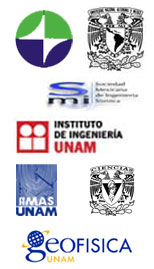
|

















